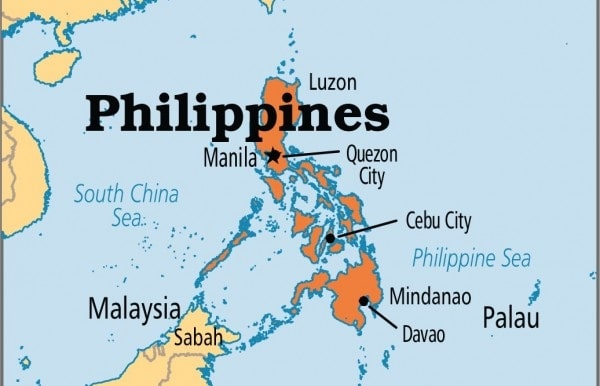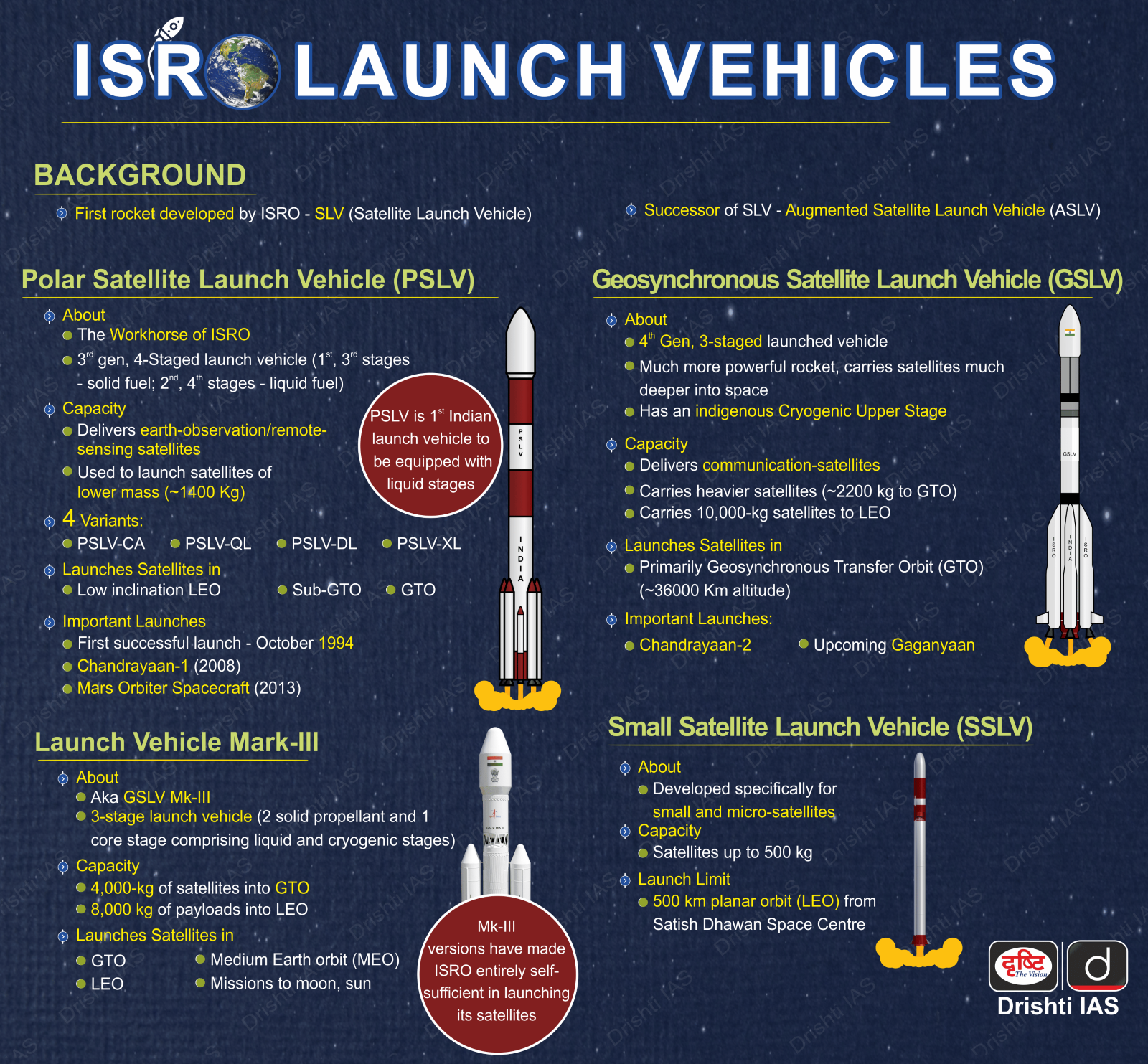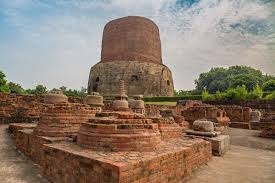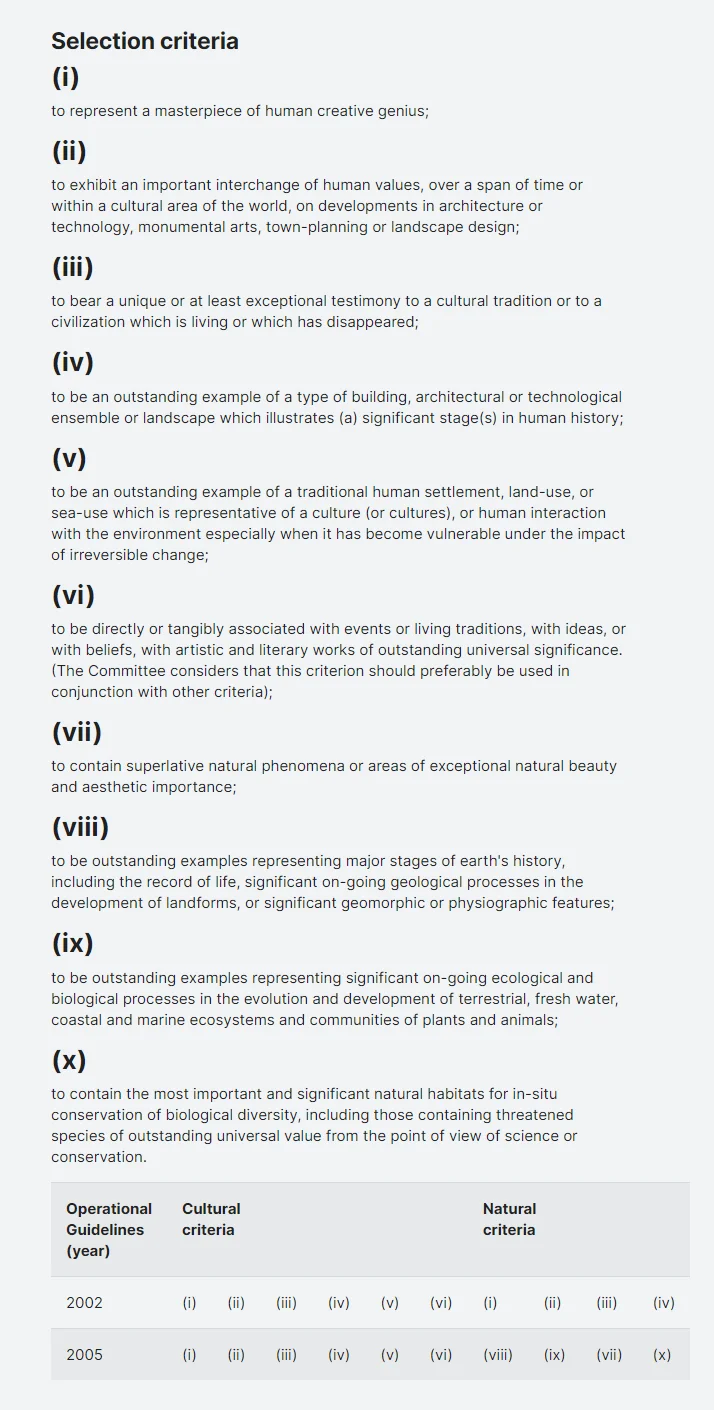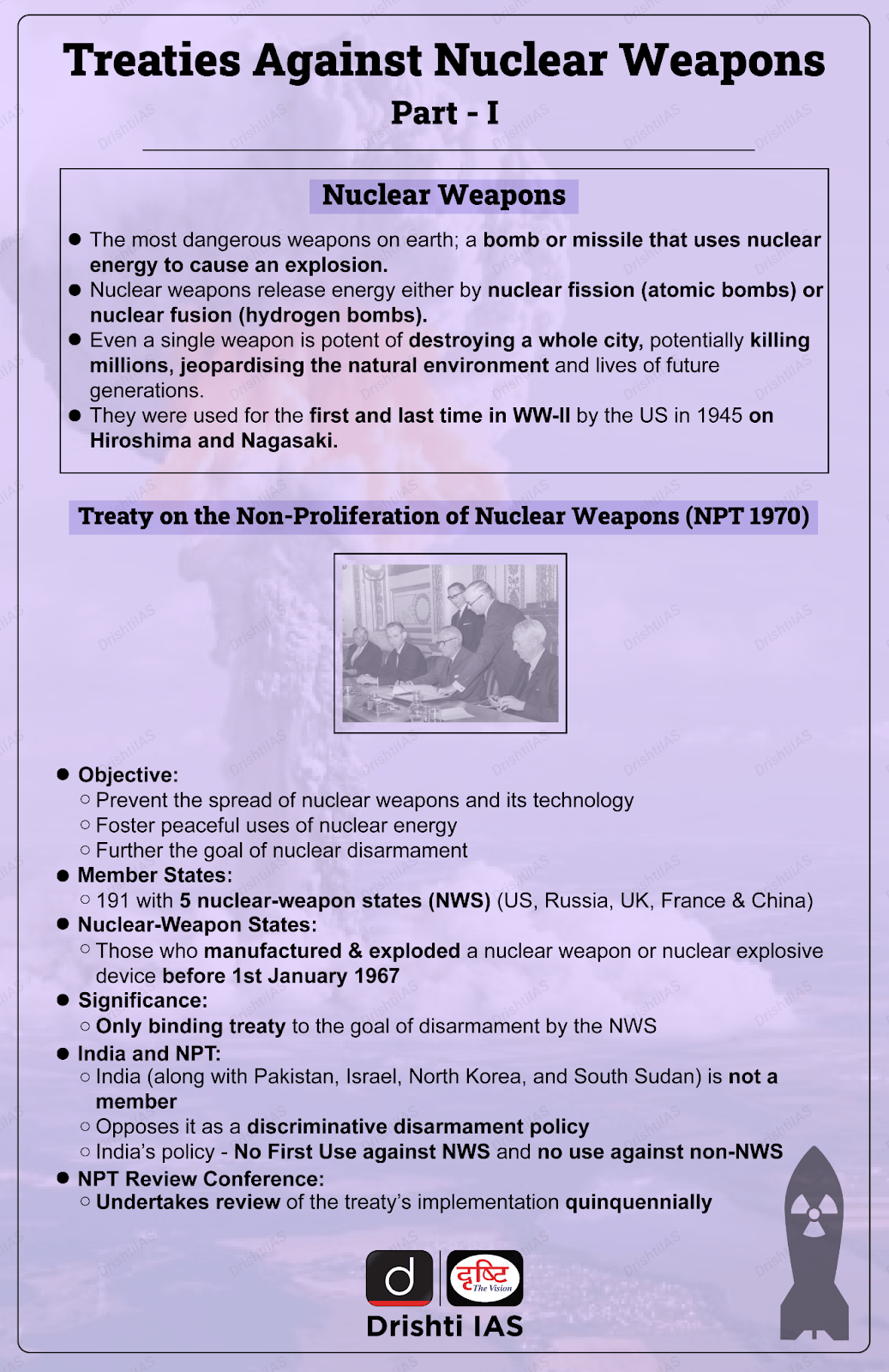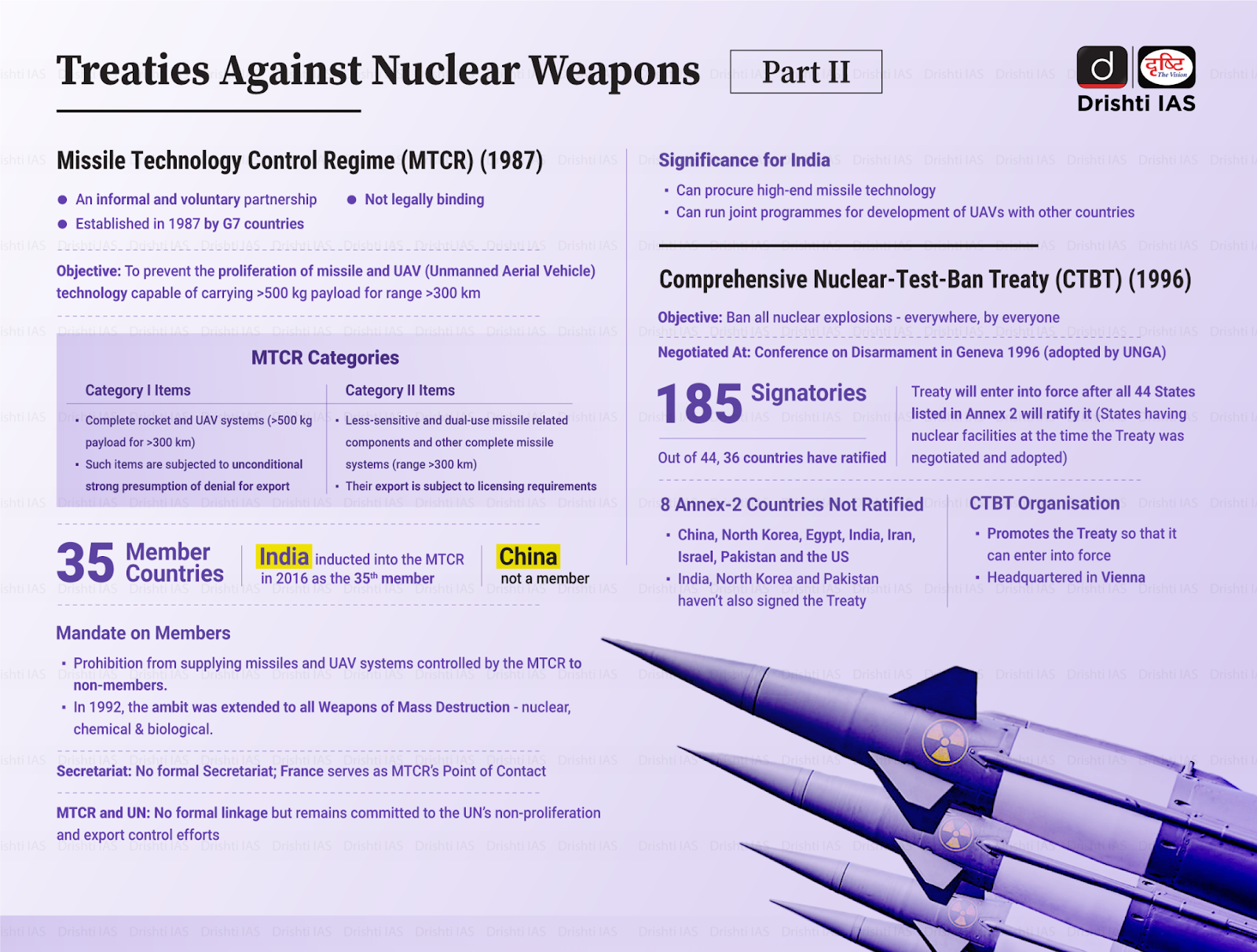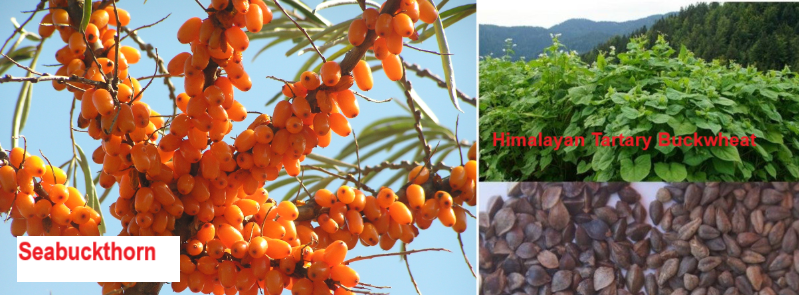International Relations
US Tariff on Indian Imports
For Prelims: India-U.S. Trade Relations, Tariff on India, Bilateral Trade Agreement, India-Russia Defense Ties
For Mains: Implications of US Tariff Policy on India-U.S. Trade Relations.
Why in News?
The US raised the additional tariff on India, citing New Delhi's continued purchase of Russian oil, making India, along with Brazil, the highest tariffed country by the US.
- India is assessing the impact and protecting national interests while negotiating a Bilateral Trade Agreement, criticizing the U.S. and EU for double standards in importing Russian goods while targeting India’s oil purchases.
- Also, India defended its energy policy as a matter of national security, stressing that oil imports are driven by market factors and energy security needs for its 1.4 billion people.
What Factors Led to the US Imposing Tariff on India?
- Stalled Trade Negotiations: Despite several rounds of talks, India and the US were unable to reach a trade agreement, with the US expressing concerns over India’s cautious approach to liberalizing sensitive sectors like agriculture and dairy.
- High Tariffs and Barriers: The US raised concerns about India’s high tariffs and certain non-tariff barriers, particularly in pharmaceuticals, electronics, and agriculture, which create market access imbalances.
- Purchase of Russian Oil and Defense Equipment: The US voiced concerns over India’s continued purchase of Russian oil and military equipment, suggesting potential measures due to its impact on sanctions enforcement.
- US Trade Deficit with India: The US highlighted a persistent $45 billion trade deficit with India, which has influenced its consideration of tariffs to address trade imbalances.
- Comparative Pressure: As the US secured favorable deals with partners like Japan and Vietnam, India faces increasing pressure to align with these terms and remain competitive in global trade.
Key Highlights of India-US Trade Relations
- In 2024-25, the US remained India's largest trading partner for the fourth consecutive year, with bilateral trade reaching $131.84 billion.
- India’s agricultural imports from the U.S. rose by 49.1% in the first half of 2025, reaching $1,693.2 million, while exports to the U.S. grew by 24.1%, totaling $3,472.7 million.
- FDI inflows from the US to India totaled $4.99 billion in FY 2023-24, marking the US as India’s third-largest source of foreign direct investment.
- In 2024, both countries signed a Memorandum of Understanding (MoU) to promote cooperation on Small and Medium Enterprises (SMEs), highlighting mutual interest in boosting sectors that support innovation and growth.
- As per Centre for Research on Energy and Clean Air, between December 2022 and June 2025, the EU was the largest buyer of Russian liquefied natural gas (51%) and pipeline gas (37%), while China purchased 47% of Russia's crude exports, followed by India (38%), the EU (6%), and Turkiye (6%).
What are the Implications of the US Tariff on India?
- Oil Imports: India imports 88% of its crude oil, with a significant portion (over 35% of its crude oil) coming from Russia, a factor influencing the US tariff decision, as India seeks affordable energy to meet its growing demand, while balancing geopolitical considerations in its energy sourcing.
- Significant Hit to Exports and Key Sectors: The US tariff will directly impact about 10% of India's total exports to the US, affecting nearly $87 billion worth of goods annually.
- Sectors most at risk include electronics (notably smartphones), pharmaceuticals, textiles, garments, gems and jewellery, and automobile components.
- The additional tariff could affect 65% of India’s exports to the US, covering sectors like textiles, gems, footwear, chemicals, and machinery.
- Pressure on Economic Growth and Jobs: Economists predict a negative impact on India's GDP growth, with the Asian Development Bank revising its FY 2025-26 forecast down to 6.5% from 6.7%, in its July 2025 report.
- Analysts warn of job losses across export-linked industries, especially textiles and jewellery, which are labor intensive and heavily reliant on the US market for sales.
- Loss of Cost Competitiveness: India’s products are now less competitive compared to those from other Asian countries like Vietnam (facing only a 20% US tariff), Indonesia, and Japan.
- This comparative disadvantage could push US buyers to substitute Indian goods with alternatives from countries facing lower tariffs, threatening India's position as a leading "China plus one" manufacturing hub in global supply chains.
- Disruption to US-India Trade Relations: The move strains diplomatic ties and derails expectations of India securing preferential trade treatment from the US. It could force India to fast-track negotiations or make further trade concessions.
- The standoff also signals broader disagreements around India’s economic policies, agricultural market access, and ties with Russia, making future deals more uncertain.
- Financial Market and Business Impact: Indian stock markets initially reacted negatively to the announcement, and over 40 Indian-listed export-focused companies faced sharp drops in share prices.
- Exporters may need to absorb part of the tariff or pass on costs, causing possible demand destruction and shrinking profit margins.
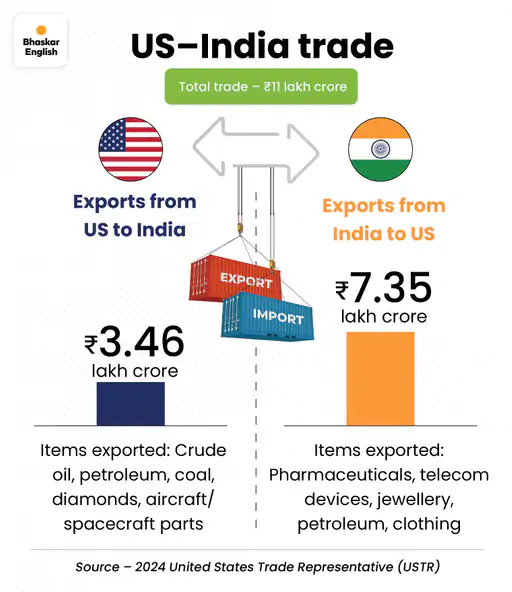
What Can be Done to Reduce the Impact of US Tariff on India?
- Accelerate Negotiations: The Indian government is already deepening trade talks with the US and has signaled commitment to securing a “fair, balanced, and mutually beneficial” agreement.
- Both governments have scheduled additional rounds of negotiations in August.
- Speeding up negotiations and exploring tactical compromises (without jeopardizing core interests like agriculture and MSMEs) could help roll back or moderate tariffs in the coming months.
- Diversify Export Markets: Indian policymakers and industry leaders are actively working to expand trade relationships with other major economies. Fast-tracking free trade agreements with the European Union, Gulf nations, EFTA, and the East Asian bloc can help Indian businesses reduce their dependency on US buyers and recoup lost demand.
- Enhance Domestic Competitiveness and Product Value: Industry experts recommend focusing on structural reforms, boosting productivity, and innovating to make Indian products more competitive globally.
- This includes moving up the value chain in textiles, engineering, electronics, and pharmaceuticals so that even with tariffs, Indian exports remain attractive due to quality, technology, or unique advantages.
- Support and Protect Vulnerable Sectors: The government has emphasized protection for key export sectors like textiles, auto components, gems and jewellery, and MSMEs.
- Possible measures include targeted subsidies, faster refunds of export duties, export credit, and marketing assistance to cushion the immediate impact and assist businesses in weathering the demand shock.
- Strategic Diversification: India should reduce its reliance on Russian crude oil, by diversifying imports from the Middle East, and Africa, and should avoid overdependence on a single supplier.
- This shift should support domestic sourcing, aiming to strengthen supply chain resilience and attract investment in more sustainable energy practices.
|
Drishti Mains Question: Q. Critically analyze the implications of the U.S. decision to impose tariffs on imports from India. What measures should India adopt to mitigate the negative impact of these tariffs? |
UPSC Civil Services Examination, Previous Year Question (PYQ)
Q. ‘What introduces friction into the ties between India and the United States is that Washington is still unable to find for India a position in its global strategy, which would satisfy India’s National self-esteem and ambitions’. Explain with suitable examples. (2019)
International Relations
India-Philippines Relations Elevated to Strategic Partnership
For Prelims: Mutual Legal Assistance Treaty, BrahMos missile, Information Fusion Centre–Indian Ocean Region, ASEAN
For Mains: India’s Act East Policy and its strategic outreach in Southeast Asia, India’s role in promoting a rules-based order in the Indo-Pacific, India-ASEAN Relations
Why in News?
In 2025, India and the Philippines elevated their relationship to a Strategic Partnership during the Philippines President's state visit to India.
- The visit reaffirmed the 1952 Treaty of Friendship and aims to enhance cooperation in defense, trade, maritime security, technology, and people-to-people ties.
What are the Key Outcomes of the Philippines President Visit to India?
- Strategic Partnership Declaration: India and the Philippines officially established a Strategic Partnership, strengthening bilateral ties and cooperation across various sectors.
- Plan of Action (2025-2029): A detailed Plan of Action was adopted to guide the partnership, focusing on key areas such as defense, trade, technology, maritime cooperation, connectivity, and climate change.
- Consular & Legal Cooperation: Philippines grants visa-free access to Indian tourists. India has extended gratis e-tourist visas to Filipino nationals for one year starting August 2025.
- Two nations finalized the Mutual Legal Assistance Treaty (MLAT) and Treaty on Transfer of Sentenced Persons.
- The MLATs in criminal matters are the bilateral treaties, entered between the countries for providing international cooperation and assistance.
- The Treaty on Transfer of Sentenced Persons will allow Indian prisoners in the Philippines, and vice versa, to serve the remainder of their sentence near their families, aiding their social rehabilitation.
- Two nations finalized the Mutual Legal Assistance Treaty (MLAT) and Treaty on Transfer of Sentenced Persons.
- Infrastructure and Investment Cooperation: The Philippines invited India to participate in large infrastructure projects, with India offering to share the Gatishakti platform for coordinated development.
- India will support the Philippines in setting up its Sovereign Data Cloud infrastructure and invited the country to join the Information Fusion Centre–Indian Ocean Region (IFC-IOR) for enhanced maritime cooperation.
How India-Philippines Relations Evolved Over Time?
- Political & Diplomatic Engagement: The two countries established diplomatic ties in 1949. The Philippines is the ASEAN-India Dialogue Coordinator for 2024–27, reflecting trust and alignment in regional cooperation.
- Economic & Trade Cooperation: Bilateral trade, supported by the ASEAN–India Free Trade Agreement, has steadily increased from USD 2.03 billion in 2020–21 to USD 3.53 billion in 2023–24, with India maintaining a trade surplus.
- India exports pharmaceuticals, engineering goods, rice, and auto parts, while importing semiconductors, copper, and food-related inputs.
- India is a key pharma supplier to the Philippines, contributing about 12% of its total pharmaceutical imports.
- Defence: A Defence MoU in 2006 led to the formation of a Joint Defence Cooperation Committee.
- In 2022, India signed a deal to supply BrahMos missiles to the Philippine Navy, marking India’s first major defense export to Southeast Asia.
- In July 2025, India and the Philippines staged their first joint naval exercises in the disputed South China Sea.
- Support at International Forums: The Philippines has backed India’s bid for a permanent UN Security Council seat and supported its non-permanent membership bids. India, in return, supports the Philippines’ candidature for 2027–28.
What is the Significance of India-Philippines Relations?
- Strategic Alignment:The Philippines lies at the crossroads of the South China Sea, a region critical for Indo-Pacific security and global trade routes.
- As part of India's Act East Policy and Mutual and Holistic Advancement for Security and Growth Across Regions (MAHASAGAR) Vision, the Philippines is a key partner for maintaining a free, open, and rules-based maritime order.
- India and the Philippines, both Indo-Pacific democracies, share concerns over China’s actions in the South China Sea. India supports United Nations Convention of the Law of the Seas, 1982 and backs the Philippines against China’s Nine-Dash Line claims.
- ASEAN Engagement: The Philippines is an influential ASEAN (Association of Southeast Asian Nations) member. Deepening bilateral ties strengthens India's presence in Southeast Asia.
- Economic Potential: India offers a large market, investment opportunities in IT, pharma, fintech, and partnerships in infrastructure and energy.
- India is supporting a pilot Sovereign Data Cloud Infrastructure for the Philippines boosting its digital autonomy and cyber capabilities.
- Special Technologies and Products: The Philippines is recognized for its expertise in seaweed cultivation, which India is looking to adopt for nutritional purposes in the future.
What are the Challenges in India-Philippines Relations?
- China’s Sensitivities and Regional Tensions: India’s naval ties with the Philippines in the South China Sea, amid China’s opposition.
- Beijing sees such moves as direct interference, which raises the risk of geopolitical friction and could test the Philippines' balancing act between India, the US, and China.
- Limited Economic Integration: India-Philippines trade is growing but remains underwhelming due to slow Preferential Trade Agreement negotiations, low investment, and weak connectivity.
- Implementation Gaps in Cooperation: Despite agreements on digital, and maritime, progress may be slow due to capacity gaps, differing priorities, and regional instability.
What Can be Done to Strengthen India-Philippines Relations?
- Prioritise Defence Capacity-Building: Expand Indian Technical and Economic Cooperation (ITEC) collaboration and pursue joint development of naval assets tailored to Philippine needs to foster durable strategic interdependence.
- Accelerate PTA Negotiations: Fast-tracking the PTA with a focus on pharma, electronics, digital services, and processed food can unlock real economic depth.
- Expand People-to-People Links: India should offer more university scholarships, especially in STEM, medicine, where India has soft power advantages.
Philippines
- The Philippines, an archipelago in Southeast Asia, has 7,641 islands bordered by the Philippine Sea (east), South China Sea (west), and Celebes Sea (south).
- Luzon and Mindanao are the largest islands, with Manila as the capital.
- Mount Apo (2,954 m) on Mindanao is the highest peak and an active volcano.
- The Philippines is located in the Pacific Ring of Fire. The country has a tropical climate and is among the world’s top biodiversity hotspots.
Conclusion
India–Philippines ties will only grow if India is seen not as an alternative to China or the US but as a country that delivers relevant, reliable, and respectful solutions. That shift requires focus, speed, and sustained engagement.
|
Drishti Mains Question: Q. India and the Philippines recently elevated their bilateral ties to a Strategic Partnership. Discuss the significance of this move in the context of India's Indo-Pacific strategy |
UPSC Civil Services Examination, Previous year Question (PYQ)
Prelims
Q.Consider the following countries: (2018)
- Australia
- Canada
- China
- India
- Japan
- USA
Which of the above are among the ‘free-trade partners’ of ASEAN?
(a) 1, 2, 4 and 5
(b) 3, 4, 5 and 6
(c) 1, 3, 4 and 5
(d) 2, 3, 4 and 6
Ans: (c)
Mains
Q. Evaluate the economic and strategic dimensions of India’s Look East Policy in the context of the post-Cold War international scenario. (2016)
Important Facts For Prelims
ISRO to Launch LVM3 with Semi-Cryogenic Stage
Why in News?
The Indian Space Research Organisation (ISRO) has set the target for the first quarter of 2027 for the inaugural flight of its LVM3 launch vehicle equipped with a semi-cryogenic propulsion stage.
What are the Cryogenic and Semi-Cryogenic Engines?
- Cryogenic Engine/Cryogenic Stage: A cryogenic stage uses Liquid Oxygen (LOX) and Liquid Hydrogen (LH2) as propellants, liquefied at -183°C and -253°C, respectively.
- It is used in the upper stage of launch vehicles like GSLV, offering high efficiency and thrust.
- Cryogenics is also used in MRI machines (using liquid helium for cooling), food storage and preservation, special effects (artificial fog), recycling (material separation), biomedical preservation (freezing blood and tissue samples), and in cooling superconductors for scientific and industrial use.
- India developed its own cryogenic technology with the first engine test in 2003 and first successful flight in 2014 (GSLV-D5/GSAT-14).
- Semi-Cryogenic Engine: A Semi-Cryogenic Propulsion Engine/Stage uses a combination of liquid oxygen (LOX) and refined hydrocarbon fuel (e.g., kerosene) as propellants.
- It is designed to power the booster stages of future heavy-lift launch vehicles and offers higher density impulse than cryogenic systems, enhancing overall propulsion performance. It will support upcoming platforms like the Next Generation Launch Vehicle (NGLV).
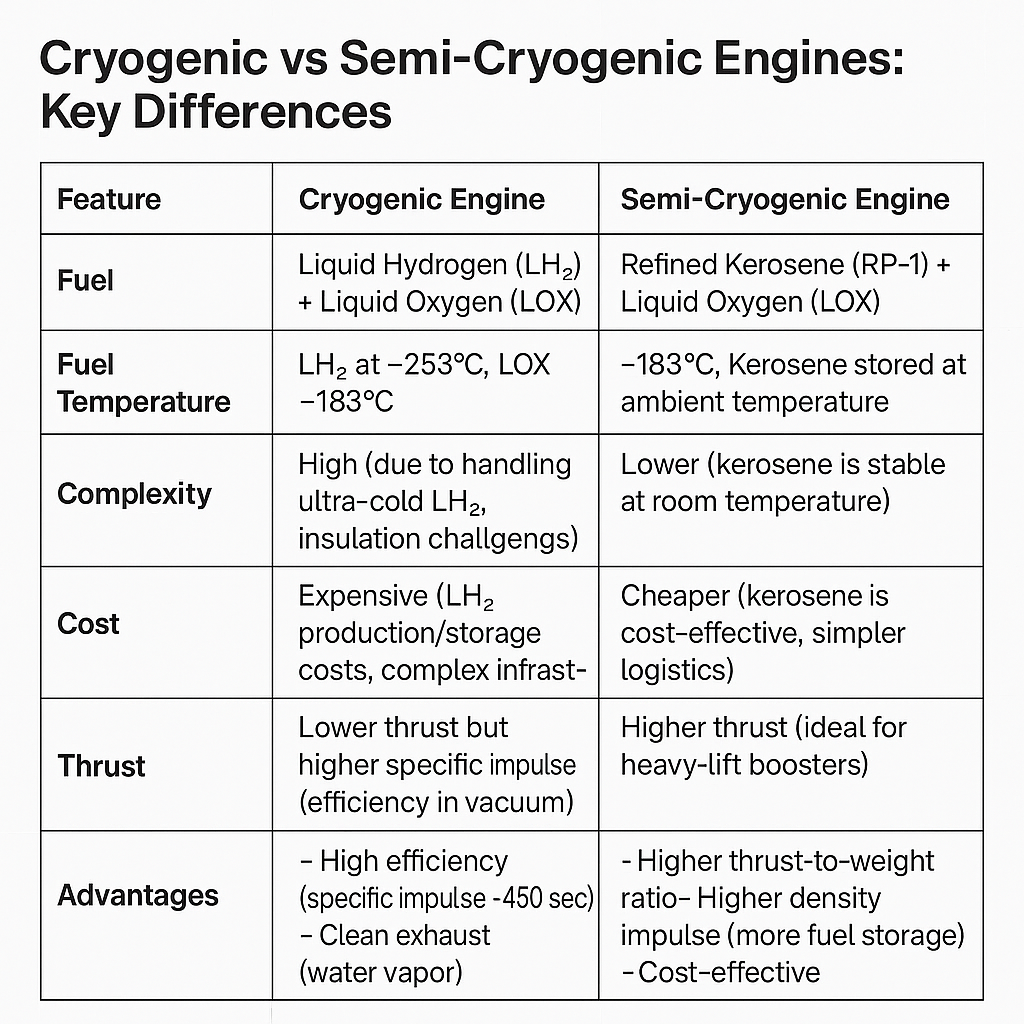
What is the LVM3 Launch Vehicle?
- About: LVM3 is ISRO’s most powerful, heavy-lift, 3-stage launch vehicle, formerly known as the Geosynchronous Satellite Launch Vehicle Mk III (GSLV Mk III).
- It had its first experimental flight in December 2014 and is capable of launching payloads up to 4000 kg to Geosynchronous Transfer Orbit (GTO).
- 3 Stages:
- First Stage: Two S200 solid strap-on boosters attached to the sides of the core, using hydroxyl-terminated polybutadiene (HTPB) as the solid propellant.
- Second Stage (Core Stage): The L110 liquid stage powered by twin Vikas engines, which burn a combination of unsymmetrical dimethylhydrazine (UDMH) and nitrogen tetroxide (N₂O₄).
- Third Stage (Upper Stage): The C25 cryogenic stage powered by the CE20 engine, using liquid hydrogen (LH₂) and liquid oxygen (LOX) as propellants.
- Key Upgrades in LVM3 Launch Vehicle:
- The LVM3 upgrade replaces the L110 liquid stage with the SC120 semi-cryogenic stage powered by the SE2000 engine (200-tonne thrust), using refined kerosene (RP-1) and LOX.
- It also increased the C25 cryogenic stage capacity to 32 tonnes. This enhances GTO payload capacity to around 5,200 kg, reduces launch costs by around 25%, and improves environmental safety.
- The upgrade boosts India’s heavy-lift capability for future satellite missions and aligns with ISRO’s next-gen launch plans.
What are the Key Missions Launched by ISRO’s LVM3 Rocket?
|
Mission Name |
Launched In |
Payload / Objective |
Remarks |
|
LVM-3/CARE Mission |
2014 |
Experimental suborbital flight, tested re-entry |
|
|
LVM3-D1 / GSAT-19 Mission |
2017 |
GSAT-19 communication satellite |
First orbital test launch |
|
LVM3-D2 / GSAT-29 Mission |
2018 |
GSAT-29 Mission communication satellite |
Demonstrated heavy communication satellite launch |
|
LVM3-M1 / Chandrayaan-2 |
2019 |
Chandrayaan-2 lunar orbiter, lander, and rover |
|
|
LVM3-M2 / OneWeb India-1 |
2022 |
36 OneWeb Gen-1 satellites (Low Earth Orbit, LEO) |
OneWeb India-1 Mission |
|
LVM3-M3 / OneWeb India-2 |
2023 |
36 OneWeb Gen-1 satellites (LEO) |
|
|
LVM3-M4 / Chandrayaan-3 |
2023 |
Chandrayaan-3 lunar lander and rover |
India’s 3rd lunar mission |
UPSC Civil Services Examination, Previous Year Question (PYQ)
Prelims
Q. With reference to India’s satellite launch vehicles, consider the following statements: (2018)
- PSLVs launch satellites useful for Earth resources monitoring whereas GSLVs are designed mainly to launch communication satellites.
- Satellites launched by PSLV appear to remain permanently fixed in the same position in the sky, as viewed from a particular location on Earth.
- GSLV Mk III is a four-stage launch vehicle with the first and third stages using solid rocket motors, and the second and fourth stages using liquid rocket engines.
Which of the statements given above is/are correct?
(a) 1 only
(b) 2 and 3
(c) 1 and 2
(d) 3 only
Ans: (a)
Important Facts For Prelims
Sarnath Nominated for UNESCO World Heritage
Why in News?
India has officially nominated the 'Ancient Buddhist Site, Sarnath for the UNESCO World Heritage List under the 2025–26 nomination cycle.
- Sarnath has been on UNESCO's “tentative list” since 1998.
What are the Key Facts Related to Sarnath?
- Location: Sarnath, located near Varanasi, Uttar Pradesh, is a major Buddhist pilgrimage site where Gautama Buddha delivered his first sermon (Dhammachakkappavattana) after enlightenment.
- Historical and Religious Significance: It is also known by names such as Rishipatana, Mrigadava, and Mrigadaya. The modern name is believed to be derived from Saranganatha ("Lord of the Deer").
- Sarnath is one of the 4 key pilgrimage sites in Buddhism, along with Lumbini, Bodh Gaya, and Kushinagar, associated with the birth, enlightenment, first sermon, and death of Buddha respectively.
- Ashes of the Buddha were enshrined in stupas at these locations to commemorate significant events in his life.
- Architecture: Sarnath reflects the architectural evolution from the Mauryan to the Kushan, Gupta, and Gahadavala periods. The site is divided into 2 main monument groups:
- Group A:
- Chaukhandi Stupa: Built around the 5th century AD to honor Lord Buddha, it is a tall brick structure with an octagonal tower on top. This tower was added later, in 1588 by Govardhan, the son of Raja Todarmal to remember Humayun’s visit to Sarnath.
- Group B:
- Dhamek Stupa: Built around 500 CE, believed to mark the exact spot of Buddha’s first sermon.
- Dharmarajika Stupa: Originally built by Mauryan Emperor Ashoka in the 3rd century BCE to house the relics of Buddha.
- Ashokan Pillar: Bearing Ashoka’s edict and originally crowned by the Lion Capital, now India’s National Emblem.
- Ancient monasteries, temples, and numerous votive stupas, spanning from the 3rd century BCE to the 12th century CE.
- Group A:
- Restoration and Invasions: Emperor Ashoka promoted Buddhism after the Kalinga War and built stupas and monasteries at Sarnath.
- Sarnath flourished under rulers like the Kushans, Guptas, and Harshavardhana, who restored structures post Huna invasions.
- The Guptas added artistic features to the Dhamek Stupa, notably stone-carved floral designs.
- The site suffered destruction during the 11th-century raid by Mahmud of Ghazni but was restored by Mahipala of the Pala dynasty.
- The last major monument, Dharmachakra Jina Vihara, was built in the 11th century by Kumaradevi, wife of Govindachandra of the Gahadavala dynasty.
- Excavations and Museums: The first scientific excavation at Sarnath was conducted by Sir Alexander Cunningham, the first DG of the Archaeological Survey of India (ASI), between 1834–36.
- The Ashokan Lion Capital and pillar base were excavated in 1904–05 by Friedrich Oscar Oertel. It was later adopted as State Emblem of India on 26th January 1950,
- The Sarnath Archaeological Museum houses the original Lion Capital, along with other important artefacts.
- The Mulagandha Kuti Vihar, built by the Mahabodhi Society, contains vibrant frescoes narrating Buddha’s life.
What are UNESCO World Heritage Sites?
- About: UNESCO World Heritage Sites are locations of exceptional cultural or natural significance, officially designated under the World Heritage Convention, 1972 for their value to all humanity.
- India ratified the Convention in 1977, joining 195 other countries in this global commitment.
- World Heritage Convention, 1972: Under the Convention, each State Party can nominate only one site per year for inscription on the World Heritage List.
- India currently ranks 6th globally and 2nd in the Asia-Pacific in terms of the number of UNESCO World Heritage Sites, and has 62 sites on its Tentative List.
- Nodal Agency: The ASI is the nodal agency for all World Heritage matters in India.
What are the Criteria to Designate a UNESCO World Heritage Site?
- Site Selection Criteria: To be designated a UNESCO World Heritage Site, a property must demonstrate Outstanding Universal Value (OUV) and meet at least one of 10 criteria, as outlined in the Operational Guidelines of the World Heritage Convention.
- Originally grouped as 6 cultural and 4 natural criteria, they were merged into a single list of 10 in 2005.
- These are periodically updated to reflect global heritage priorities.
- Nomination & Evaluation Process: A site must first be included in the country’s Tentative List.
- The State Party submits a detailed nomination dossier, which is reviewed by the World Heritage Centre.
- The dossier is then evaluated by Advisory Bodies such as:
- ICOMOS (International Council on Monuments and Sites) (for cultural sites),
- IUCN (International Union for Conservation of Nature) (for natural sites) and
- ICCROM, which provides technical expertise and training in conservation.
- Final Decision: The World Heritage Committee, which meets annually, makes the final decision. It can inscribe, defer, or request more information.
- India is a current member (2021–25) of this Committee, contributing to global heritage governance.
UPSC Civil Services Examination, Previous Year Questions (PYQs)
Prelims:
Q. Consider the following properties included in the World Heritage List released by UNESCO: ( 2024)
- Shantiniketan
- Rani-ki-Vav
- Sacred Ensembles of the Hoysalas
- Mahabodhi Temple Complex at Bodhgaya
How many of the above properties were included in 2023?
(a) Only one
(b) Only two
(c) Only three
(d) All four
Ans: (b)
Mains:
Q. Safeguarding the Indian Art Heritage is the need of the moment. Discuss. (2018)
Q.Indian Philosophy and tradition played a significant role in conceiving and shaping the monuments and their art in India. Discuss. (2020)
Facts for UPSC Mains
Direct Benefit Transfer for LPG (DBTL) Scheme
Why in News?
India’s Direct Benefit Transfer for LPG (DBTL), also known as the Pratyaksh Hastantarit Labh (PAHAL) scheme, has led to the blocking, suspension, or deactivation of over 4.08 crore duplicate, fake, or inactive Liquefied petroleum gas (LPG) connections.
What is the Direct Benefit Transfer for LPG (DBTL)?
- About: DBTL launched in 2015 by the Ministry of Petroleum and Natural Gas, to transfer LPG subsidies directly into consumers’ bank accounts, ensuring transparency and reducing leakage.
- Under DBTL all LPG cylinders are now sold at non-subsidised rates, with the subsidy component sent to beneficiaries post-delivery.
- Key Features
- Direct Benefit: The subsidy is automatically credited to the user's account through either the Aadhaar Transfer Compliant (ATC) or Bank Transfer Compliant (BTC) mode. This eliminates diversion and fake connections, protecting consumer entitlements.
- Consumer Empowerment: Users can opt in/out of subsidy based on eligibility.
- Efficient Delivery: Improves transparency and streamlines LPG supply.
- Eligibility: Must be a registered LPG consumer, and the combined taxable income of the applicant and their spouse should not exceed Rs 10,00,000 in the previous financial year, as per the Income Tax Act, 1961.
-
Achievements: As of July 2024, over 30.19 crore LPG consumers are enrolled in the PAHAL scheme. In 2024–25, 194 crore refills were delivered, with just 0.08% complaints, showing the scheme's efficiency.
-
92.44% of the active LPG consumers have Aadhaar seeded in the system. 86.78% of DBTL consumers are Aadhaar-transfer compliant.
-
A third-party evaluation by Research and Development Initiative (RDI) found over 90% of users satisfied with PAHAL’s subsidy system. It recommended better targeting, stronger grievance redressal, and wider safety awareness.
-
How has India’s Welfare Delivery Improved through its DBT System?
- DBT and Curbing leakages: India’s DBT system saved Rs 3.48 lakh crore by curbing leakages and halved subsidies from 16% to 9% of India’s spending on subsidies (2009–2024).
-
Beneficiary Coverage: Beneficiaries under DBT surged 16-fold (from 11 crore to 176 crore (2014–2024)) driven by digital infrastructure like the JAM Trinity (Jan Dhan, Aadhaar, Mobile).
- DBT includes both cash transfers (like Pradhan Mantri Kisan Samman Nidhi (PM-KISAN), pensions, and scholarships) and in-kind support (such as food through Public Distribution System and fertilizer subsidies).
- A strong positive correlation (0.71) exists between beneficiary coverage and DBT savings, indicating that as coverage expanded, savings increased.
-
A negative correlation (-0.74) between subsidy expenditure and welfare efficiency highlights the reduced waste and leakages facilitated by DBT.
-
-
Welfare Efficiency Index (WEI): The BlueKraft Digital Foundation’s WEI quantifies DBT’s success, incorporating DBT savings (50% weight), subsidy reduction (30% weight), and beneficiary growth (20% weight). It rose from 0.32 in 2014 to 0.91 in 2023, showing improved efficiency and inclusion.
|
Drishti Mains Question: Q. How has the Direct Benefit Transfer system reshaped India’s welfare delivery system? |
UPSC Civil Services Examination, Previous Year Questions (PYQs)
Mains
Q. Reforming the government delivery system through the Direct Benefit Transfer Scheme is a progressive step, but it has its limitations too. Comment. (2022)
Rapid Fire
Russia Withdraws from 1987 INF Treaty
Russia has formally withdrawn from the 1987 Intermediate-Range Nuclear Forces (INF) Treaty.
- About the INF Treaty (1987): Signed by the US and the Soviet Union, it banned all ground-launched ballistic and cruise missiles with a range of 500–5,500 km. It aimed to reduce nuclear threat and promote global arms control.
-
The US exited the INF Treaty in 2019, accusing Russia of violating it, which had already weakened the treaty’s relevance.
-
- Reason for Russia’s Exit: Russia claimed the treaty’s conditions no longer exist, and it cited US deployment of Typhon missile systems in the Philippines and missile drills in Australia (Talisman Sabre exercises) as a direct threat to its national security.
- Implications for Global Security: Raises fears of a renewed nuclear arms race and weakens global non-proliferation and arms control efforts.
-
Other Major Nuclear Arms Control Treaties:
- Treaty on the Non-Proliferation of Nuclear Weapons (NPT) (1970): Prevents nuclear proliferation, it acts as a key pillar of global disarmament. (India is not a member).
- Comprehensive Nuclear-Test-Ban Treaty (CTBT) (1996): Bans all nuclear weapon test explosions or any other nuclear explosions. The Treaty was negotiated in Geneva by the Conference on Disarmament. (India has not signed CTBT).
- New Strategic Arms Reduction Treaty (New START) (2010): Successor to the "Start Treaty", it places verifiable limits on deployed strategic nuclear warheads and launchers of both the US and Russia.
Read more: Nuclear Disarmament: India's Balancing Act
Rapid Fire
Seabuckthorn and Himalayan Tartary Buckwheat
Seeds of seabuckthorn and Himalayan Tartary Buckwheat from Ladakh have been sent to the International Space Station (ISS) by NASA’s Crew-11 mission as part of the "Emerging Space Nations' Space for Agriculture & Agriculture for Space" payload.
- The seeds will return to Earth with NASA's Crew-10 mission. The experiment aims to develop resilient crops for space and Earth, blending science with traditional agricultural knowledge.
- Sea buckthorn (Hippophae rhamnoides L.): Also known as the “Wonder plant” or “Ladakh gold,” is a hardy, drought-resistant shrub found across Europe and Asia, including the cold deserts of the Himalayas.
- It tolerates extreme temperatures (–43°C to +40°C), fixes atmospheric nitrogen, and helps prevent soil erosion and prevents desertification.
- Traditionally, all parts of the plant (fruit, leaves, roots, thorns) are used for medicine, nutrition, fuel, and fencing.
- Himalayan Tartary Buckwheat: Cultivated in China, Bhutan, northern India, Nepal, and central Europe, is known for its greater cold and drought resistance.
- It offers health benefits due to its content of resistant starch, proteins, minerals, and phenolic substances, which help prevent chronic diseases like hypertension, obesity, and cardiovascular issues.
Read more: Ladakh Sea Buckthorn and Kerala Onattukara Sesame
Rapid Fire
DAC Greenlights Multi-Domain Capability Upgrades for Armed Forces
Source: IE
The Defence Acquisition Council (DAC) chaired by the Defence Minister has approved capital acquisition proposals worth ₹67,000 crore, enhancing combat readiness across the Army, Navy, and Air Force.
- Tri-Services Capability Boost
-
MALE RPAs (Medium Altitude Long Endurance Remotely Piloted Aircraft) approved for Army, Navy, and Air Force. It enables 24x7 surveillance and combat missions at extended ranges
-
-
Indian Air Force (IAF) Upgrades
-
Maintenance Support for US-origin Aircraft (12 C-130J Super Hercules and 11 C-17 Globemaster III fleets)
-
S-400 Missile System (Russia) is also approved for Annual Maintenance Contract (AMC)
-
SPYDER/SAKSHAM System (India-Israel collaboration) Upgrade for Integrated Air Command and Control System (IACCS)
- It also enhances air surveillance and missile defence in mountainous zones
-
- Indian Navy Acquisitions
- Compact Autonomous Surface Craft for anti-submarine warfare (ASW)
- It detects, classifies, and neutralises underwater threats
- BrahMos (joint collaboration between India and Russia) Fire Control Systems and Launchers
- Upgrade of BARAK-1 Point Defence Missile System (Israel) that enhances shipborne air defence
Defence Acquisition Council (DAC)
- It is chaired by the Union Minister of Defense that gives 'in principle' approval to capital acquisitions, monitors major project progress, and grants acceptance of necessity for acquisition proposals.
- It was formed after recommendations made by the Group of Ministers on 'Reforming the National Security System' in 2001, post-Kargil war.
Read More: Defence Acquisition Council

